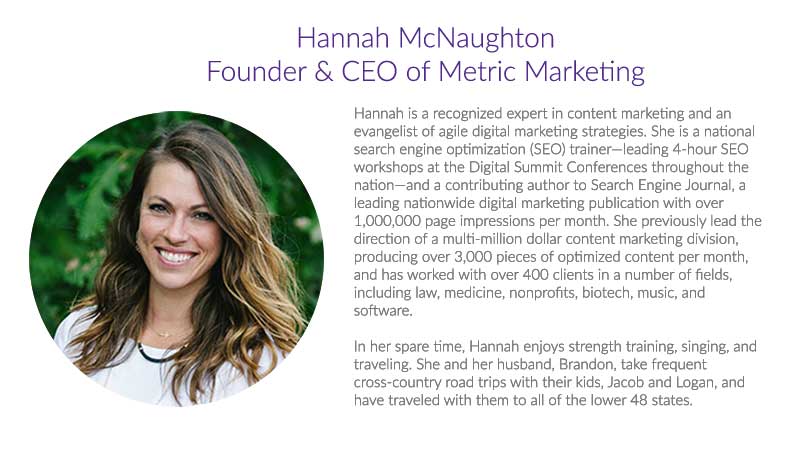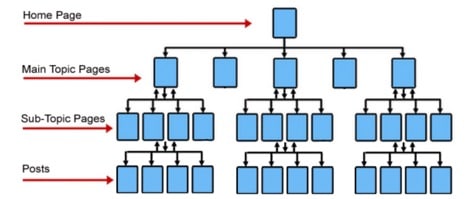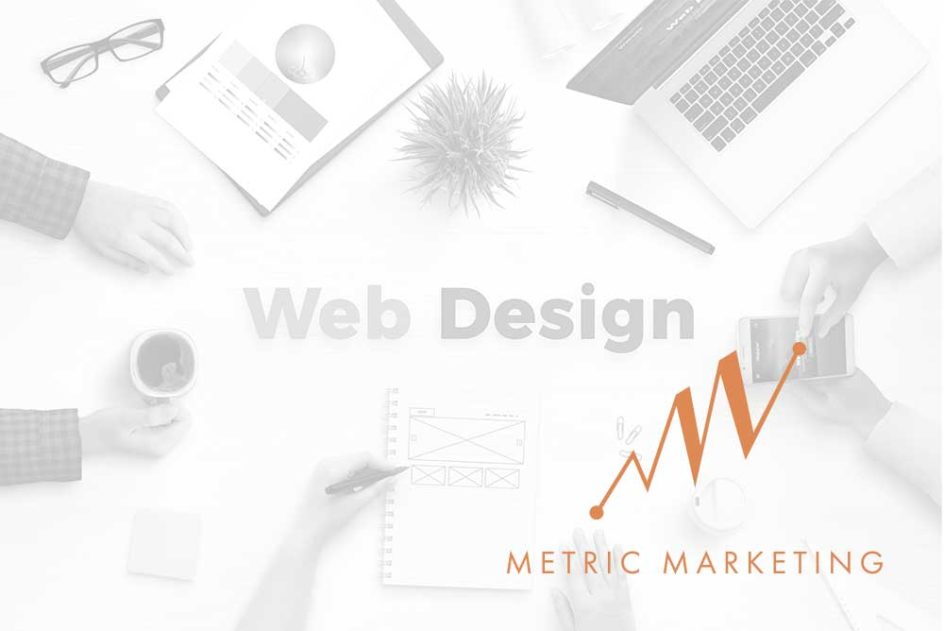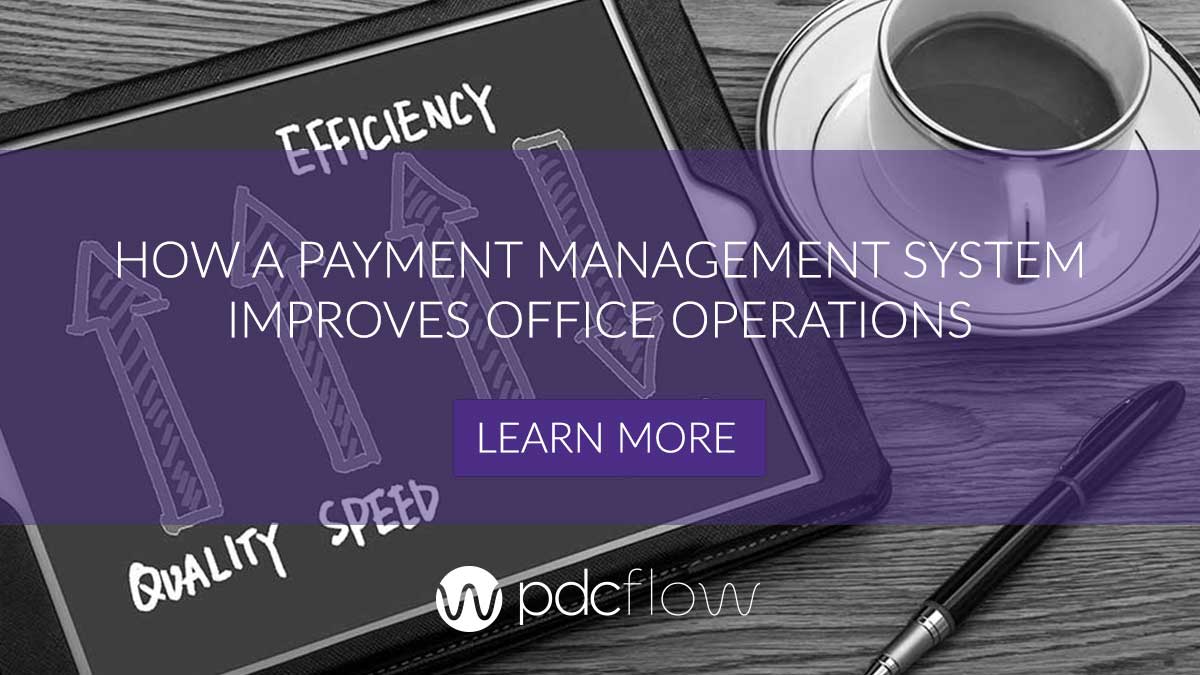Share this Article
In the financial services industry, you need to be able to prove legitimacy and build trust with consumers and potential clients. The best way to do this is to build your web presence through a great company website.
We spoke to the experts at Metric Marketing to learn what elements every business should consider when creating or redesigning a corporate website. Here’s what their Founder and CEO had to say.

September is here! Crisp breezes are blowing, school is back in session, and Q4 goals are underway. For many businesses, this means it’s time to discuss year-end strategies and goals and, oftentimes, these conversations include talk of a website redesign.
A fresh, new website can be an exciting morale-booster for your business. But, while it may seem like a fairly straightforward task, a website redesign should always be entered into with realistic expectations and a deep understanding of the time and work involved. If you rush through the redesign you could be left with a slow site, broken links, and search engine rankings that are worse than when you began.
Slow and steady wins the race, so don’t rush into this without ensuring you’ve considered these 10 factors:
1. Persona Development
Before redeveloping a website—or launching any marketing initiative for that matter—you need to know who your target audience is.
Hint: you are not your target audience.
Your website should serve the needs of your target customers. Are your target customers salespeople? C-level executives? College students? Stay-at-home moms? Figure that out and create a website for them. Then run every decision about that website through the lens of your target user. This piece is so important but is often overlooked.
Do. Not. Skip. This. Step.
This is a make or break piece of the marketing puzzle. Do the hard work here and it’ll all pay off down the line.
Want a helpful tool to get you started? Check out makemypersona.com.
2. Content Management System
It doesn’t matter how beautiful your site looks or how wonderful your content is if it cannot be easily optimized for search engines, so before you jump into a website rebuild, you need to ensure it’s built on a steady foundation.
This is where your content management system—or CMS—comes in. A CMS is a software platform that you’ll use to add, delete, and manage the content on your site. Your choice of CMS can greatly affect your experience—as well as search engines’ experience—with your site.
When choosing a CMS, you can choose to build on an open-source platform (like WordPress) or a proprietary system (like Squarespace).
While there are pros and cons to each type of CMS and no CMS is perfect for every business, WordPress is by far the most widely used platform with over 60% of the CMS market share. That’s more than all other CMS systems combined! Its ease of use and optimization ability make it our go-to platform for website builds.
3. Brand Guidelines
An impending website design offers a great opportunity to take a look at your brand. Every design decision for your site should be in line with your brand, from colors and fonts to voice and tone. For this reason, it’s extremely important to have established brand guidelines before you begin the website design process.
When examining your brand guidelines, don’t forget to take a hard look at your logo. If your logo is out of date or uninspiring, now’s the perfect time to do something about it.
4. Content
You can’t have a website without content, and you shouldn’t write content without considering your personas in mind.
What are their pain points and fears? Ease them with your expertise.
What questions do they ask most often? Make sure to answer them.
Maybe you think you have a good topic to write about but want to know what questions people are asking about that topic. If so, you’re in luck. Check out Answer the Public. This tool will tell you what questions people are asking about your topic, based on real search data.
5. Site Structure
In any website, navigation is extremely important, but an often-overlooked aspect that is equally as important is your URL structure.
Even though we intuitively know we need to organize our content, most websites are unorganized and chaotic. Oftentimes, they’re set up in a “flat” structure, where all new pieces of content are added as blogs, for example, which gives them all the same importance.
If your URL structure looks like “domain.com/blog/blog-title/,” this is the kind of structure you’re using.

Just like you organize content on your desktop by using a folder structure, you should do the same with your website. This is referred to as a “silo” structure and helps search engines to understand which articles go with which topics.
In this structure, you would have a homepage about your main topic (e.g., “Cars”), which is supported by a topic page (e.g., “Ford”). That main page may have a subtopic page (e.g., “Mustang”), which is further supported by blogs, FAQs, videos, and other content about that topic.
Your URLs would look similar to this: “domain.com/ford/mustang/why-mustangs-are-cool/

This structure makes so much more sense to human users and search engines alike because it clearly shows the hierarchy of page importance, as well as builds out topical expertise.
6. Site Speed
There are over 200 ranking factors to why a site ranks where it does in Google, and site speed is one of them. Your CMS can affect your site speed, but so can your hosting.
When choosing a hosting provider, as with many things in life, you get what you pay for. For WordPress builds, we recommend using WP Engine. Their nearly 100% uptime combined with blazing fast load speeds and excellent customer support puts them at the top of our list.
As a rule of thumb, you want your site to load in 2 seconds or less. Anything more leaves your customers frustrated and clicking the back button.
Want to know where you stand? Check out GTmetrix. You’ll get a report of your site speed, as well as information on how to fix the things that are dragging it down.
7. Mobile Friendliness
I feel like this shouldn’t have to be said, but some businesses still aren’t getting the memo: Your site needs to be mobile friendly.
With over 60% of searches taking place on a mobile device—and even more depending upon your industry—you need to ensure the mobile version of your site is user friendly. Aside from user experience, Google now uses what’s called “mobile-first” indexing, which means Google crawls your mobile site and uses its experience there to determine your rankings across both mobile and desktop devices. Let that sink in for a minute. This means if you have a blazing fast desktop site but a mobile interface that’s slow and clunky, you’re out of luck.
Gone are the days of having a separate desktop site and mobile site. The best way to guarantee your site is ready for the masses is to use responsive design, which ensures your site will respond to the user's screen size, platform and orientation.
Want to know if your site is mobile friendly? Run a quick test in Google’s Mobile Friendly Tool.
8. Security
In addition to site speed and mobile friendliness, site security is also a ranking factor that you shouldn’t overlook. It’s also not as easy as just buying a security certificate. You also need to redirect all HTTP links, update references in content, and more.
Here’s the part where I’ll offer you a warning: If your site is currently unsecure, switching to HTTPS will likely cause volatility in your search rankings. This is because switching from HTTP to HTTPS is perceived the same as switching your domain altogether, so give Google some time to re-find your pages. In the short term, some of your rankings may go down, or may disappear altogether. This is a moment in which you need to hang on and ride out the storm. Once Google re-indexes your site, it is common for your search rankings to return to previous levels or better—but only if you cross all the T’s and dot all the I’s through the migration.
9. Insights
I would bet that most people reading this have Google Analytics, but do not have Google Search Console. This is very common, because we’re so focused on humans and often think the technical pieces are for the developers, but this couldn’t be farther from the truth.
Getting ranked in Google is all about providing an exceptional user experience—for ALL users.
Remember when we talked about personas? Well, there is a persona we’ve mentioned this whole time but likely didn’t make it into your persona exercise: the search engine.
Google Analytics tells you how human users are interacting with your site. Google Search Console tells you how search engine users are interacting with your website. Both of these tools are incredibly powerful and incredibly important in understanding where you’re doing well—and where you’re totally missing the mark—on your website.
10. Marketing Automation
You’ve built an incredible site and made sure it looks good, functions well on all devices, meets your personas’ needs, provides excellent content, is well organized, is blazing fast, and is secure. Now we’re getting to the fun part!
Have you ever wondered about the pathway that lead someone to fill out a form on your site? Where did they come from? What did they read? Or have you ever wanted a system that could reply to inquiries for you in order to ensure your leads don’t just fall off the map? A marketing automation system can help you to work smarter, not harder.
Just like content management systems, there are a ton of marketing automation tools out there. There’s no one best marketing automation system for all businesses, so you need to understand your company’s goals, needs, and capabilities.
For most of our clients, HubSpot is the marketing automation tool of choice. It’s robust but also extremely user-friendly. It still has a learning curve (they all do) but is much easier to learn and use than other marketing automation systems. Combine this with HubSpot’s plethora of support articles and you’re golden.
Redesigning a website has a lot of moving pieces but can be a rewarding experience if you keep user experience at the forefront of all your design decisions. Take your time, don’t rush through the important parts, and try to enjoy the experience. If you follow Google’s guidelines, you’ll come out on the other side with a website that’s more appealing to both human users and search engines alike.
If you’re considering a website redesign or are just interested in learning more about digital marketing, check out Metric Marketing’s Annual Digital Marketing Workshop. It’s coming up on September 11 at Zingerman’s Greyline in downtown Ann Arbor, Michigan.
Go to https://www.metricmarketing.com/digital-marketing-training/ann-arbor/ for more information and use code “PDCflow” for $318 off your ticket price!
For additional accounts receivable industry news and information, subscribe to the PDCflow Blog.





